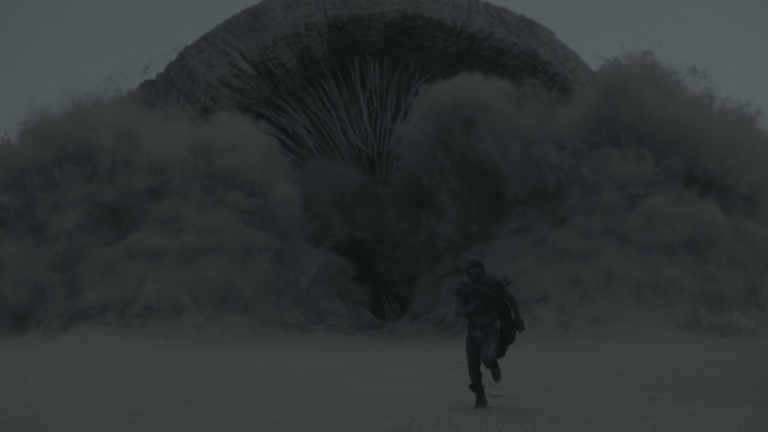
These gigantic worms burrow deep in the ground and travel swiftly "most of the sand on Arrakis is credited to sandworm action". Sandworms grow to hundreds of meters in length, with specimens observed over 400 metres 1.300 ft long and 40 metres 130 ft in diameter, although Paul becomes a sandrider by summoning a worm that "appeared to be" around half a league 2.778 meters = 9121 ft or more in length. the bellows breath of cinnamon, subtle aldehydes.

crystal teeth with the curved shape of crysknives glinting around the rim. During his first close encounter with a sandworm in Dune, Paul notes, "Its mouth was some eighty meters in diameter. They are cylindrical worm-like creatures with a fearsome array of crystalline teeth which are used primarily for rasping rocks and sand. Sandworms are animals similar in appearance to colossal terrestrial annelids and in other ways to the lamprey.
#Dune 2000 sandworm movie#
This design was referenced for the sandworm puppets that appeared in the 1984 movie adaptation of Dune. Schoenherr gave the sandworm three triangular lobes that form the lips of its mouth. Frank Herbert was very pleased with Schoenherrs art, and remarked that he was "the only man who has ever visited Dune".
#Dune 2000 sandworm serial#
John Schoenherr provided the earliest artwork for the Dune series, including the illustrations in the initial pulp magazine serial and the cover of the first hardcover edition. Novelist Brian Herbert, Frank Herberts son and biographer, explained that "In Children of Dune, Leto II allowed sandtrout to attach themselves to his body, and this was based in part upon my father’s own experiences as a boy growing up in Washington State, when he rolled up his trousers and waded into a stream or lake, permitting leeches to attach themselves to his legs."
#Dune 2000 sandworm how to#
He knew how to mask his presence from prey by techniques such as approaching from downwind and treading lightly. This element comes from Frank Herberts experiences as a hunter and fisherman. To escape the notice of the sandworms, a traveller in the desert must learn to "walk without rhythm", because sandworms mistake any rhythmic vibrations in the sand for prey. And a new consciousness assumes that you will confront dangerous unknowns - you will go into the deeps. Every such acquisition requires a new consciousness.

the extension of human lifespan cannot be an unmitigated blessing. For this, I give you the sandworms of Dune. Yet, after the primal confrontation, the roots of this threat must appear as familiar and necessary as your own flesh. The elements of any mythology must grow from something profoundly moving, something which threatens to overwhelm any consciousness which tries to confront the primal mystery. Herbert believed great power and knowledge must come at some sort of price, and so Paul must risk being devoured by a sandworm and then madness after consuming sandworm extract the Water of Life. In the plot of Herberts 1965 novel Dune, sandworms provide the danger and mystery of terra incognita, and the transformational experience the protagonist Paul Atreides must go through to triumph over his enemies. In one of the novels, the sandworms are referred to as "dragons of the desert". Like these dragons, the sandworms of Arrakis guard the melange deposits and pose a hazard for those who wish to harvest this treasure. Favorites of Herbert included the dragon in Beowulf that guarded a hoard of gold, and the dragon of Colchis that guarded the Golden Fleece from Jason. The sandworms in Dune were inspired by the dragons of European mythology that guard some sort of treasure.


 0 kommentar(er)
0 kommentar(er)
